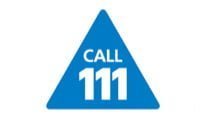NHS 111 has not improved efficiency in the NHS and has a low probability of cost savings to the emergency and urgent care system, an independent evaluation report says.
However, a “simplistic economic analysis” concludes that national roll-out of the urgent care telephone number "could potentially" save the NHS money.
NHS 111 has dealt with more than 1m calls since its introduction in August 2010 and is live in 13 sites across England.
The University of Sheffield has published its ‘Evaluation of NHS 111 pilot sites’ report into the first four sites to go live.
It concludes that one year after launch, the pilots had “not delivered the expected benefits in terms of improving satisfaction with urgent care or improving efficiency by directing patients to urgent rather than emergency care services.”
There was no significant change in emergency ambulance calls, A&E attendances or urgent care attendances.
But there was an increase in ambulance call-outs of 29 additional incidents per 1,000 NHS 111 triaged calls per month. Researchers say this trend should be investigated.
The British Medical Association has expressed concern about the potential for NHS 111 to drive up demand for health services.
Various groups have also expressed disquiet about the government pushing ahead with a national roll-out of the service before the independent evaluation report had been released.
The report’s economic analysis for all sites estimated that NHS 111 would cost an extra £307,000 per month in these sites and that this might vary between saving £118,000 and costing £733,000.
A simplistic economic analysis of the likely effects of the national roll-out of the service – including replacing NHS Direct and the impact on GP out-of-hours call handling – said that it could potentially save the NHS money.
“Assuming 7.8m NHS 111 calls per year, the estimated monthly cost impact to the NHS would be a saving of £2.5m, although this could vary between a saving of £12million and an additional cost of £7m,” the report says.
“These estimates are based on considerable assumptions and limited cost data and should be treated with caution.”
The report says that it can take time for a new service to become established and things may improve, but it “cannot be assumed that increase in use, and time, will produce expected benefits.”
The majority of calls were judged to have achieved the objective of “right place, first time,” but there is scope to refine the assessment and referral pathways, it adds.
Of the four pilot sites studied, one was ambulance service–provided and three were provided by NHS Direct.
The proportion of calls transferred for further clinical advice was a third higher in the three NHS Direct sites than the ambulance service site.
Call episode times ranged from 6.5 to 13 minutes, with the shortest time in the ambulance service-provided site.
Where calls resulted in a patient being referred to a service, the largest proportion was directed to primary care and 9%-13% required an ambulance.
Overall satisfaction with NHS 111 was very good, with 73% of respondents reporting that they were ‘very satisfied’ and 19% that they were ‘quite satisfied’ with the new service.
However, satisfaction levels were lower for some aspects of the service, in particular relevance of questions asked and advice given.
The population surveys showed no change in satisfaction with urgent care or the NHS following the introduction of NHS 111.

